Double Pikake…umm, what is it?
I have to tell you — my head was spinning the first time when I heard this style and I tried to put it together from the book’s instructions. I read the page over and over, and somehow it still didn’t match what I already knew from actually stringing shells. The drawings didn’t look like what we make in real life, and the explanation felt much more complicated than the style itself.
I even thought I was doing it wrong!
Before We Begin: Do You Know the Single Pikake Style?
If you’re not yet sure what the single pikake style (kui lepelepe / kui lau) is, or how it’s tied and shaped, please read my blog “What Is the Single Pikake Style?” — you can click the link below to read about it. This will make understanding the double version so much easier.
➡️ Read: What Is the Single Pikake Style? ›
If you’re new to Momi shells and want to understand their colors and rarity, you can also visit:
➡️ What Are Momi Shells? ›
And if you’re curious how I get my Niʻihau shells and what the process looks like, here’s more information:
➡️ Where Do You Get Your Niʻihau Shells? ›
When the Instructions Make Your Brain Twist
Here’s the honest truth: sometimes you can read something ten times and still not get it, lol. And that’s completely normal with Niʻihau shell techniques. Reading instructions and actually doing them with your hands are two totally different worlds.
You can stare at the words, stare at the picture, tilt your head, squint your eyes… and nope — your brain still refuses to click click. You think,
“Wait… is that it? Or is that wrong? Why does this look so different in real life??”
And trust me — I went through the same thing.
It took me real time, real patience, and a lot of effort to understand this style.
I kept searching, I kept trying, I kept second-guessing myself.
Then finally — after all that — something just popped into my head.
I repeated the idea out loud, ran straight to my work table, tried it again, and… yeah… lol… it finally made sense.
Just to be sure, I asked my respected supplier (she’s a lei master), and she confirmed that yes — this is exactly how Double Pikake is done. After all my confusion, it turned out my instincts were right the whole time.
So if you’re still confused after reading this… lol, I don’t blame you.
Sometimes we all think too much, and that makes it harder to see how simple something really is.
With Pikake styles, your hands usually understand it before your brain does — sometimes you just have to do it. Let your common sense guide you and see what happens, lol. That’s exactly how I learned to make Niʻihau shell jewelry myself.
Self-taught is a wonderful journey… but it definitely takes much, much longer than having someone guide you.
So What Is Double Pikake?
Let’s make it super simple:
Double Pikake is exactly what it sounds like.
You double the strings, and then you tie the same Pikake knot.
That’s it.
Single Pikake – How It’s Made
• Start with one string and fold it in half so you have two working ends.
• Add one shell to each end, making sure the shells match well enough to sit evenly when tied.
• Bring the two shell-loaded ends together and tie your Pikake knot, creating the classic two-shell cluster.
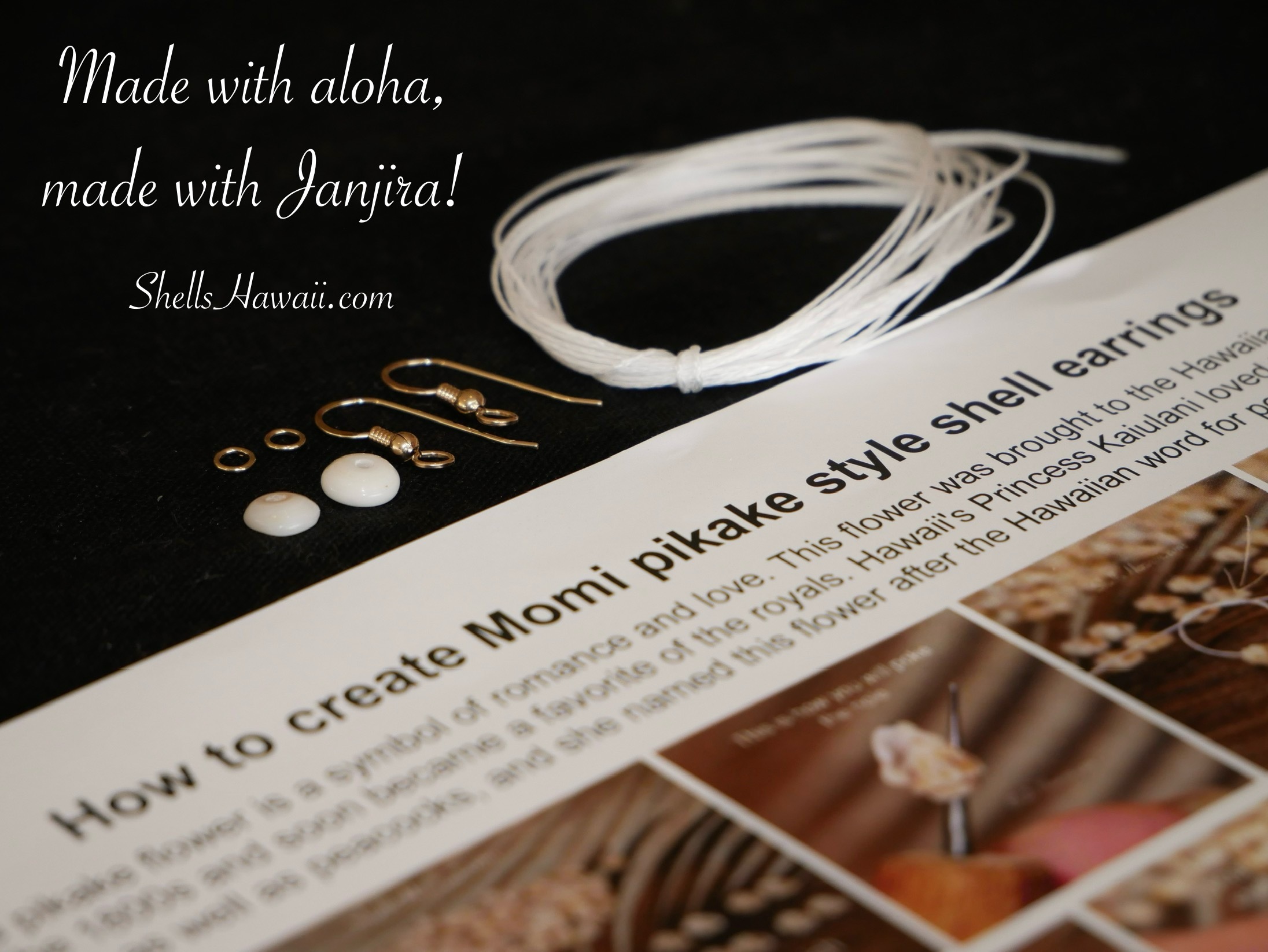

➡️ Read: What Is the Single Pikake Style? ›
If you’d like to give it a try yourself, I do offer a Niʻihau shell kit in the Pikake-style poking — you can find it by clicking ➡️ Niʻihau Shell Earrings Kit.
If you’d like to see how the finished earrings and lei look in the single Pikake style, here are two examples you can explore:
• Single Pikake earrings example
• 40″ Momi Single Pikake lei with matching earrings
Double Pikake — How It's Made
• Begin with two strings — because yes, “double” Pikake literally means you are doubling the entire setup.
• Fold both strings together so you suddenly have four working ends, which already feels more complicated in your hands than on paper.
• Add one shell to each of the four ends, then pair the shells so they align properly.
• Finally, tie all four ends into one knot, forming the 4-shell Double Pikake cluster.
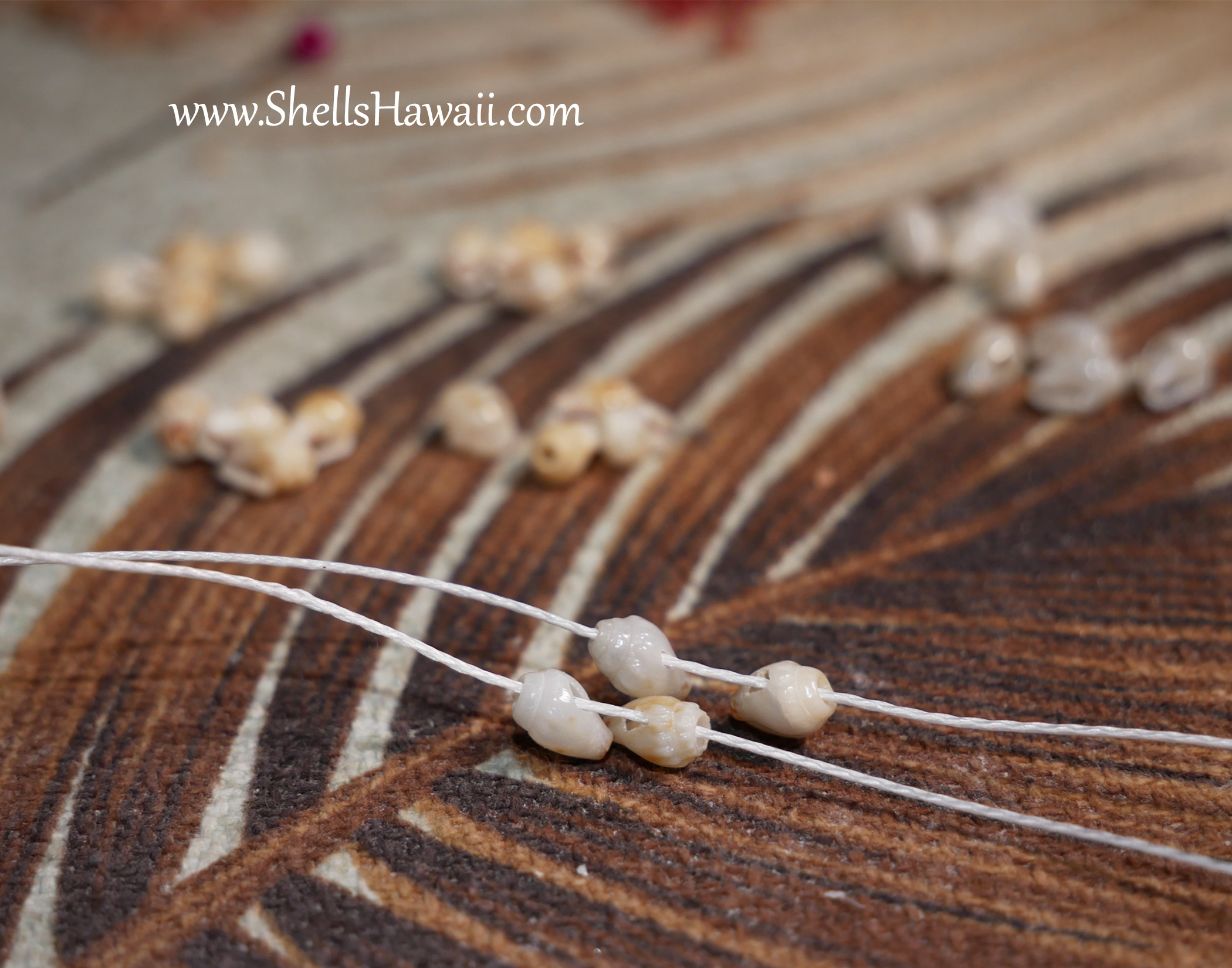
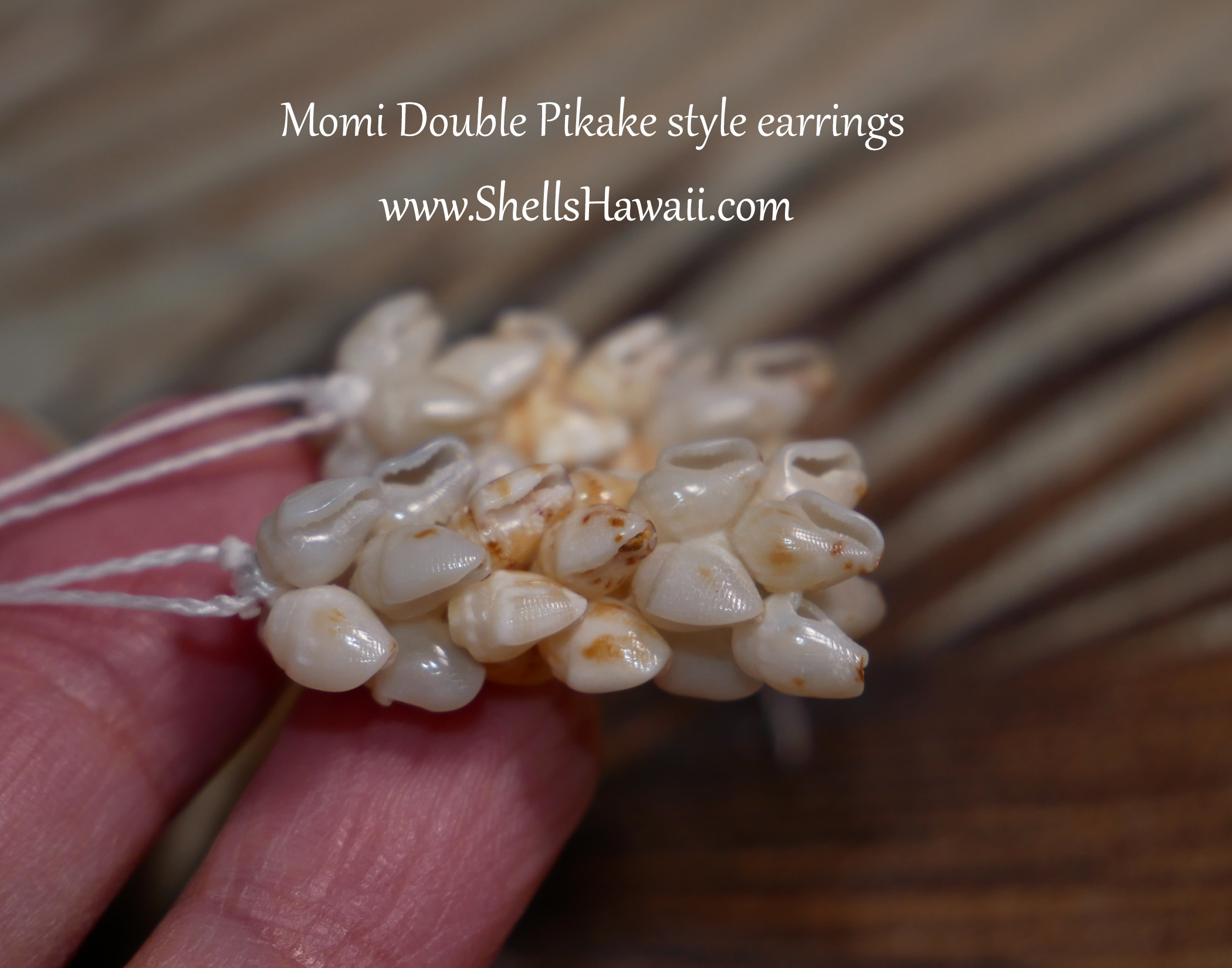
One More Little Secret
One of the things you can see in the photo is that even with Double Pikake, the shells still fall into their natural spiral rhythm. This rhythm never goes away — it’s part of what keeps everything looking balanced and beautiful.
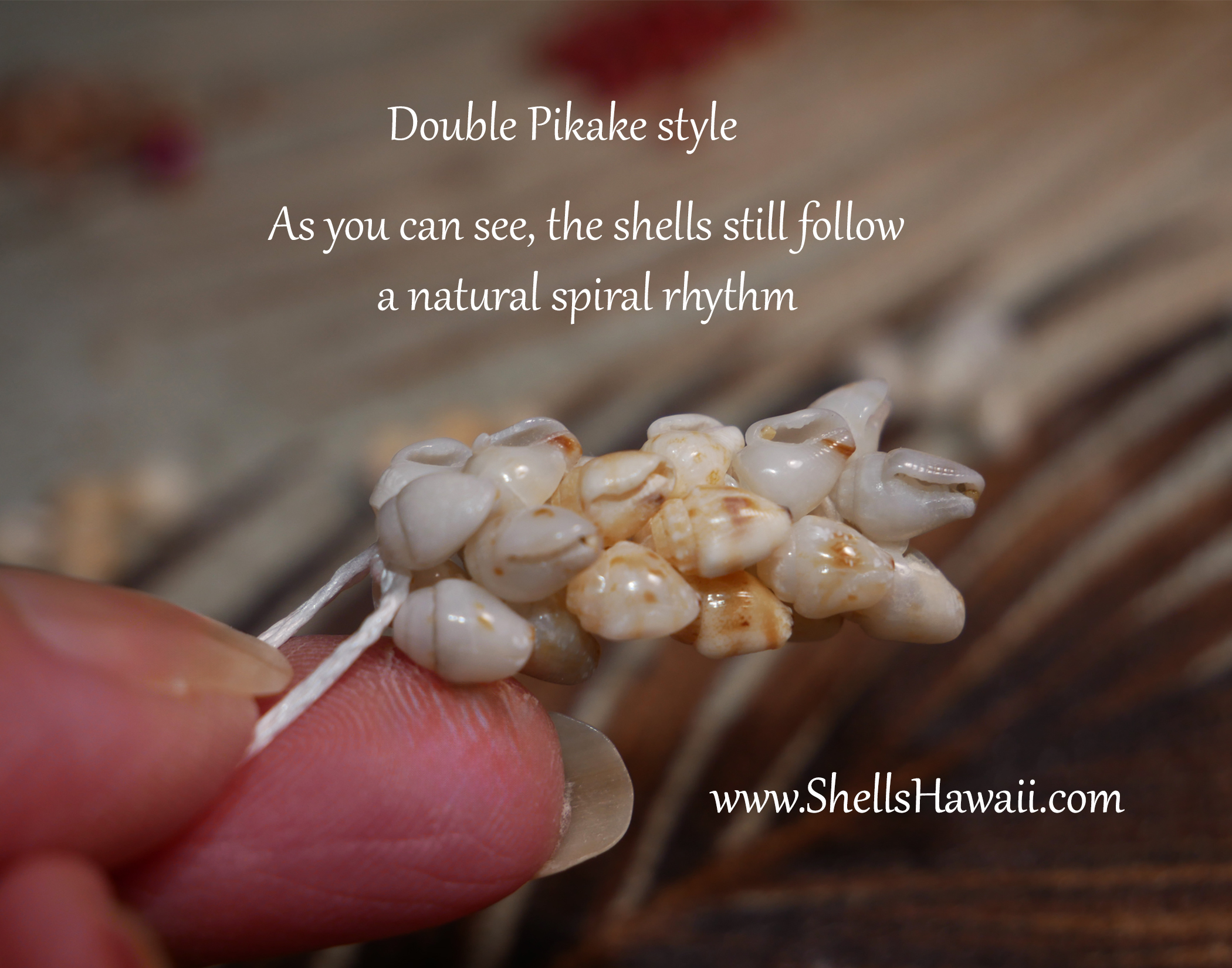
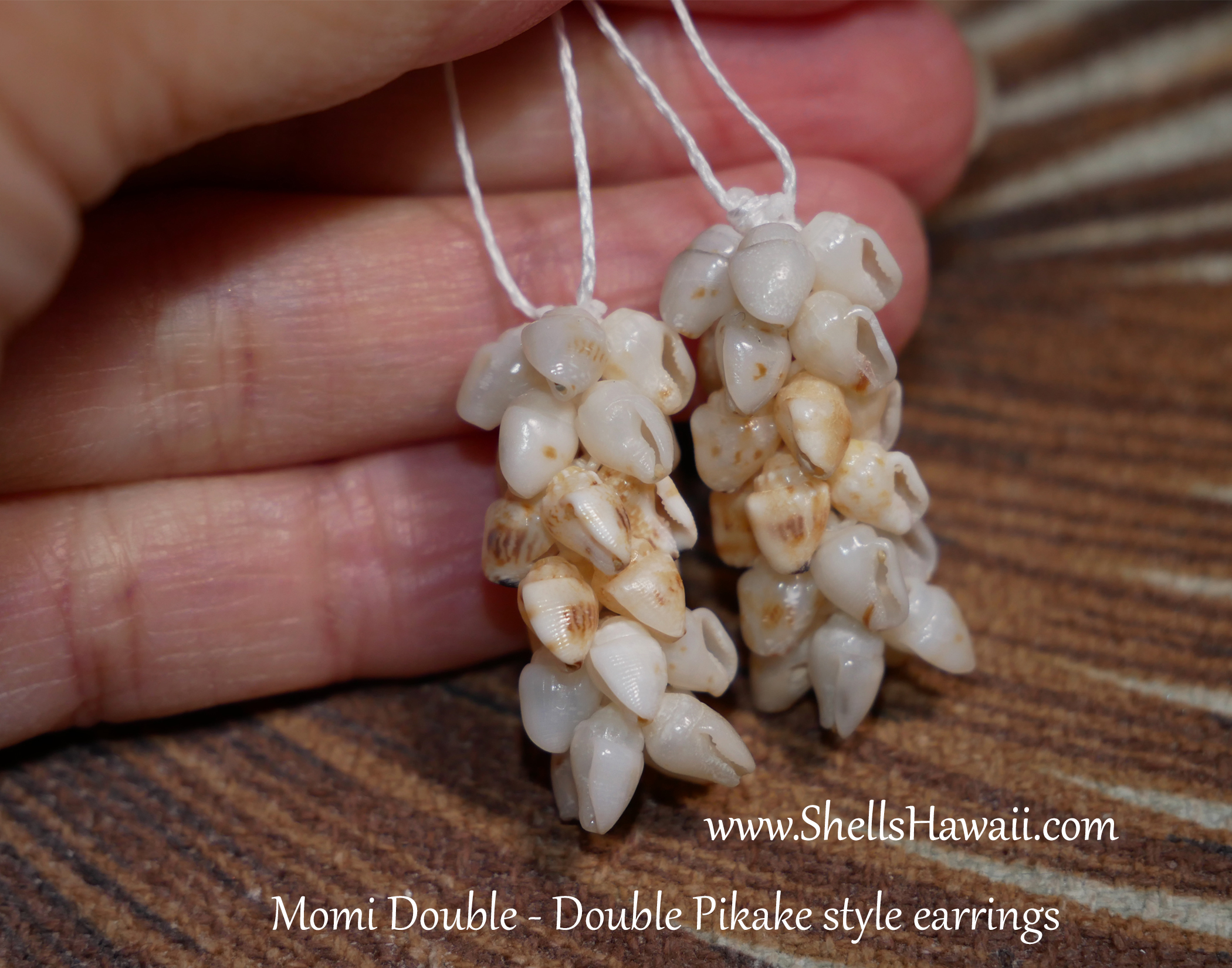
✨ You can always use this spiral as your guide when you’re stringing and tying the shells.
It helps you keep the direction, tension, and flow consistent from cluster to cluster.
Same technique. Same movement.
There are just so many designs, techniques, ways of poking, and ways of tying in this amazing art. Every style has its own personality, its own logic, and its own challenge. That’s why Niʻihau shell jewelry is so beautiful, so amazing, and so filled with aloha. The patience, the effort, the tradition, and the love you put into every tiny shell — all of it becomes part of the final piece.
⚓ Now that you’ve learned Single Pikake and Double Pikake, our next blog will explore the Double-Double Pikake style.
Please stay tuned — it’s another fun challenge to understand and learn!
 USD
USD

